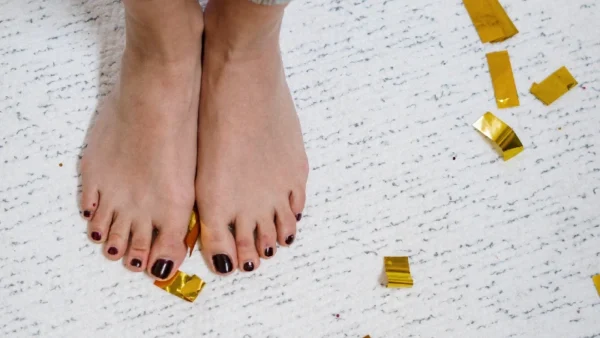Disclosure: This post may contain affiliate links, meaning we get a commission if you decide to make a purchase through our links, at no cost to you. Please read our disclosure for more info.
Last Updated on December 30, 2023 by Steal the Style
Trying to figure out which toe separator is right for you? Here are the pros and cons of each.
Do you suffer from pain or discomfort in your feet that resulted from improper foot posture, uncomfortable shoes, wear and tear or maybe even a genetic condition? If you’re looking to improve your foot health, reduce pain, decrease pressure, and realign your toes to their natural position, you may want to consider using toe separators.
Toe separators are devices that help keep toes in their natural separated positions. Toe separators benefits include a number of things, from pain relief to improved circulation. There are many different types of toe separators available on the market, including silicone, gel, foam, and moleskin. In this article, we will discuss the 4 most popular types of toe separators.
In This Post:
1. Silicone Toe Separators
Silicone toe separators are made from soft, flexible, medical-grade silicone and are designed to provide cushioning and support for your toes. They are often used to relieve pain from bunions, hammertoes, and other foot conditions.
Silicone separators come in a variety of formats. The most common option is small wedges that can be placed in between two toes, usually the big toe and the second toe. You can also buy ones that go between all your toes at once.
Silicone separators can be worn with or without shoes and can be washed for reuse. Depending on the type you get and how they fit with your feet, you may need to use medical tape to keep them in place.
2. Gel Toe Separators
Gel separators are made from a soft, gel-like material and are designed to provide cushioning and support for your toes. They are very similar to silicone toe separators in terms of texture and feel, with the exception that gel separators may be a bit less firm, depending on the exact gel material they’re made from.
Like silicone, gel toe separators come in a variety of formats, from individual wedges to full sets to specialized products made for specific toe issues. They are also washable and reusable.
3. Foam Toe Separators
Foam toe separators are made from, you guessed it, foam! They provide cushioning and support for your toes in a similar way to silicone and gel separators, and they also come in various formats and sizes. However, they are usually not as soft or pliable as silicone or gel options. This may make a significant difference if your feet deviate a lot from the standard shape and size.
Foam separators are often significantly cheaper than silicone and gel, although this can vary depending on the quality of the foam. In general, they aren’t washable, and subsequently have a limited amount of reuses. They also may not hold up as well against sweat or water.
4. Moleskin Toe Separators
Moleskin toe separators aren’t exactly separators in the traditional sense. While they perform a similar function as the others on this list, moleskin separators usually take the form of straps, strips, or patches that adhere to a certain part of your feet or toes to add additional padding and support.
Moleskin is an excellent option for bunions, corns, and preventing blisters. They are also very easy to apply and remove, which makes them a good option if you only need separators for certain activities or shoes.
Types of Toe Separators
| Types | Material | Design | Common Uses | Reusability | Maintenance |
|---|---|---|---|---|---|
| Silicone | Soft, flexible silicone | Wedges or full sets | Relieves pain from bunions, hammertoes, and other foot conditions | Washable, reusable | May need medical tape for secure placement |
| Gel | Soft, gel-like material | Individual wedges or full sets | Provides cushioning and support for toes | Washable, reusable | May be less firm compared to silicone |
| Foam | Foam | Various formats and sizes | Provides cushioning and support for toes | Not washable, limited reuses | May not be as soft or pliable as silicone or gel options |
| Moleskin | Moleskin material (straps, strips, or patches) | Straps, strips, or patches | Adds padding and support, great for bunions, corns, and preventing blisters | Easy to apply and remove | Not a traditional separator, provides additional padding |
Conclusion
As you can see, there are many different types of toe separators on the market, each with their own advantages and disadvantages. It’s important to choose the right type of separator for your needs in order to get the most benefit from them. If you’re not sure which type is best for you, we recommend speaking to a podiatrist or other foot specialist about your unique situation.

